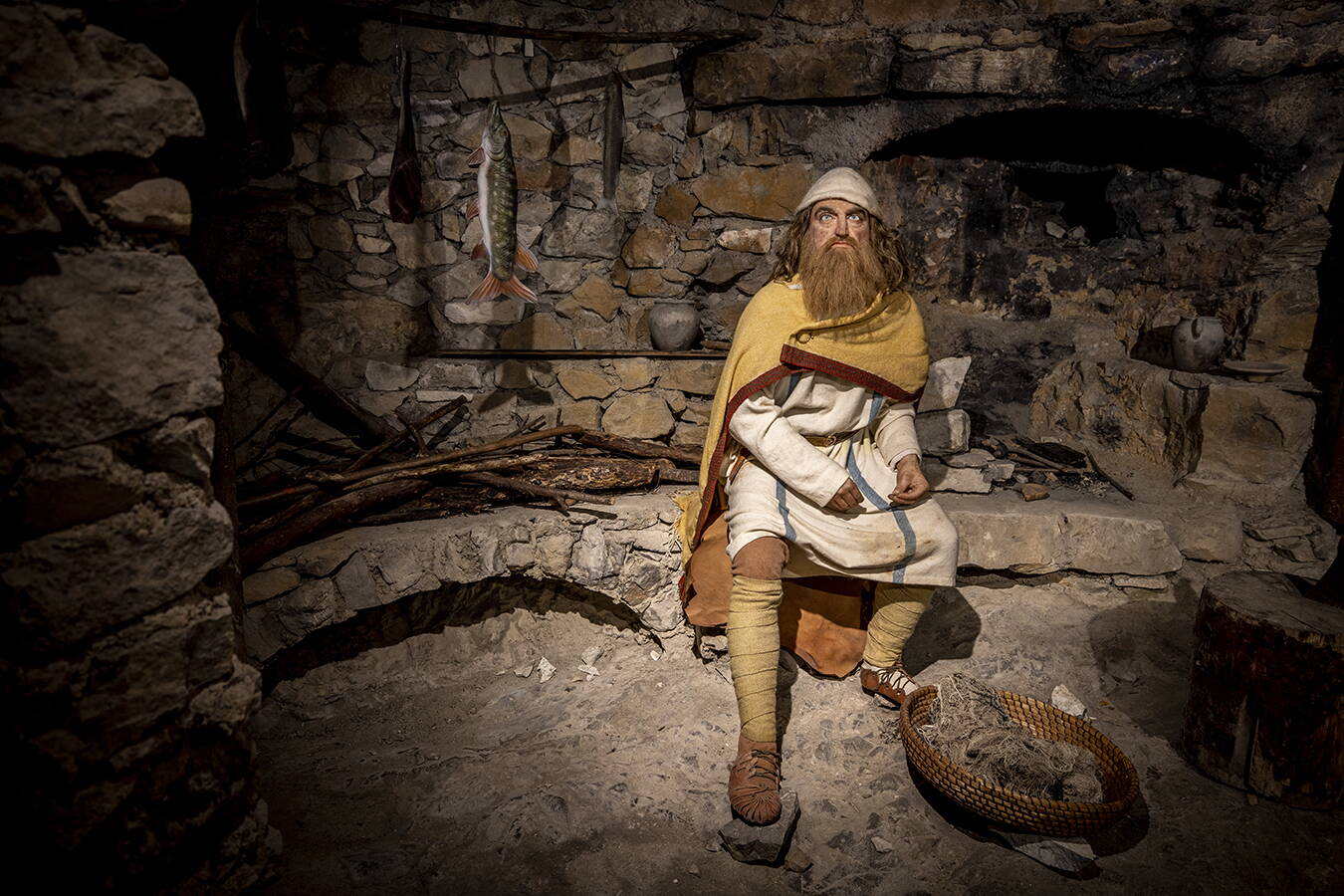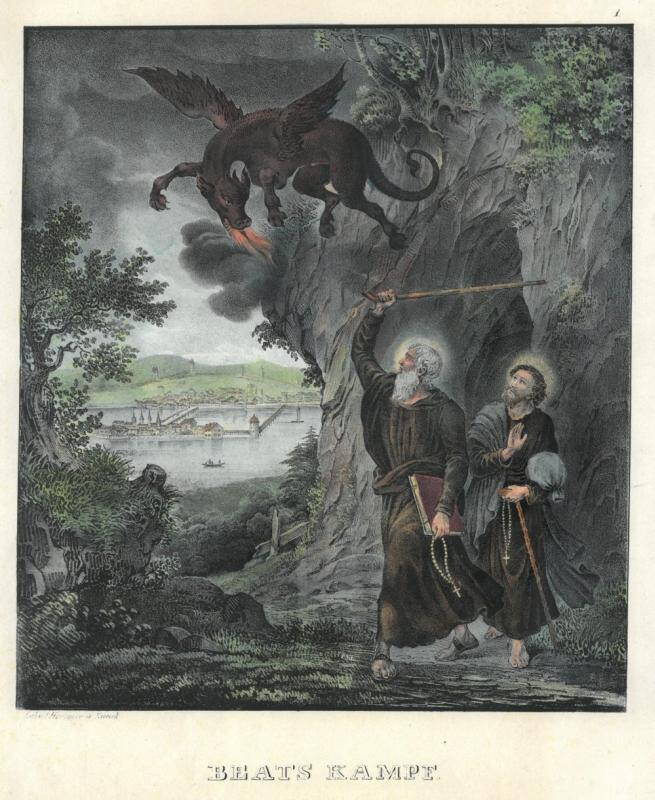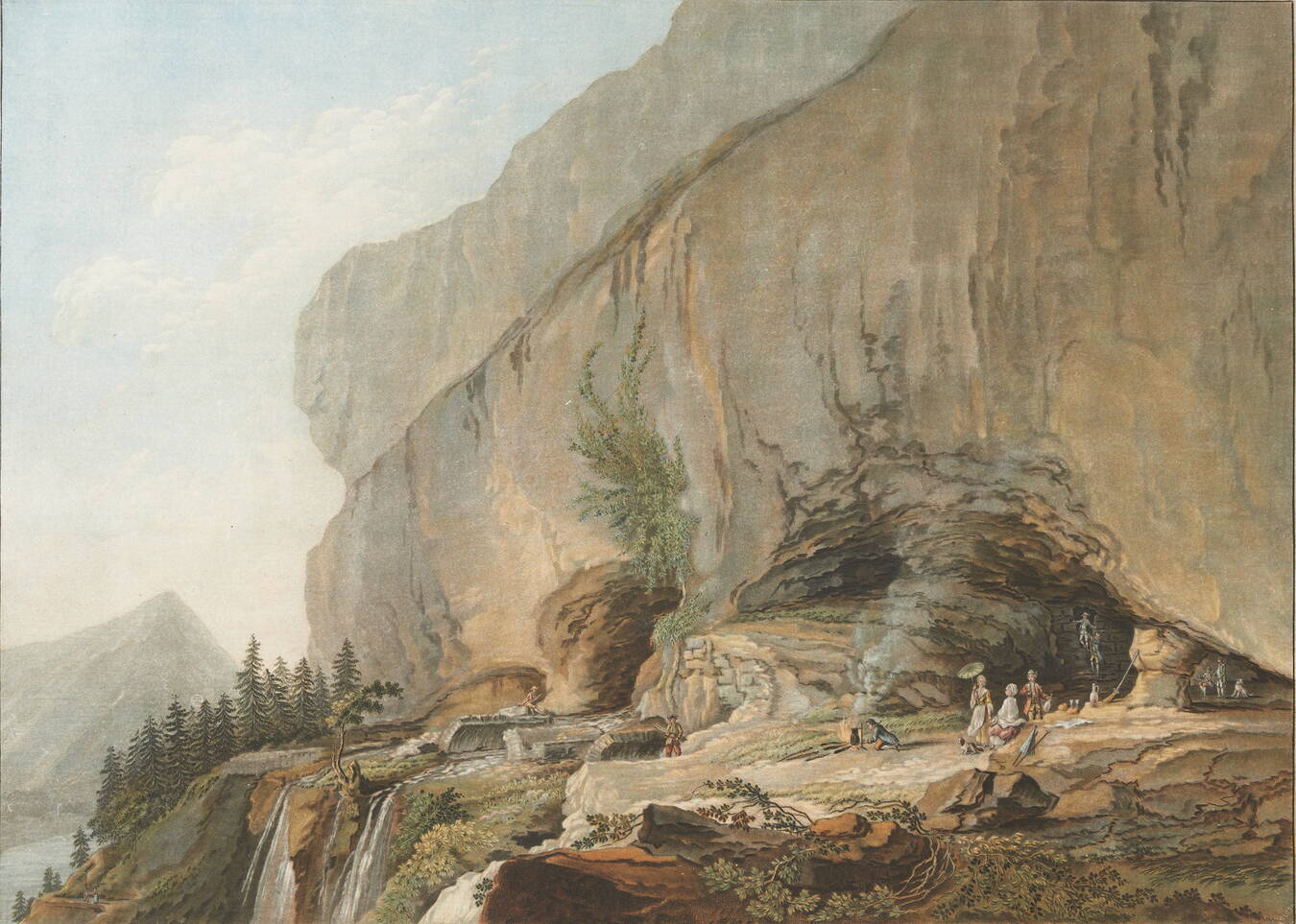Legends from the St Beatus Caves
The Hermit of the Niederhorn
The entrance to the cave world of Lake Thun with its impressive mountain stream that plunges into the depths, especially at high tide, has been known to the people of the region for thousands of years. As early as the Hallstatt period (750-450 B.C.), people used the caves and grottos in the rock face of the Beatenberg as a refuge. Legend has it that Suetonius, born in Scotland around 112 A.D., lived here and as an adult took the name Beatus. After spending his childhood in Ireland, Beatus went on a journey as a disciple of the prophet Peter. As an early Christian missionary, endowed with supernatural powers, he sought to convert the pagan population to the true faith.

A Scot settles down
The journey from Ireland to Lake Thun was long and arduous. After the crossing to the mainland, Beatus rode on his horse all the way to the Alps. Together with his friend Justus, Beatus made the pilgrimage along Lake Brienz to Sundlauenen, where the two strangers were given a warm welcome. After many years of wandering, Beatus grew tired and longed for a place where he could settle down. He found what he was looking for in Sundlauenen, where he set up his hermitage.
Freed from the dragon
The people of the village were happy that a wise and holy man had come to their village. They told him about an evil dragon that was destroying everything with its flames. They lived in fear and hoped for the wise man's help. Beatus wanted to free the people from this fear and set out to banish the dragon. He travelled by boat from Sundlauenen to the shore below the cave. He climbed into the cave and defeated the monster with the power of his pilgrim's staff. When the dragon fell dead into the depths of Lake Thun, the people rejoiced.

Peace settles in
The village came to rest and Beatus was able to return to his life's work. Next to the caves where the dragon once lived, Beatus found a small grotto which he set up as a hermitage. Here he received the sick and injured to heal and bless them. With his supernatural powers, Beatus, like other Irish missionaries of his time, was able to tame nature with God's help and convince people to embrace Christianity. St Beatus was known far and wide and many people travelled to him for help. When the saint died at a ripe old age, there was great mourning. His tomb can still be seen at the entrance to the hermitage.
